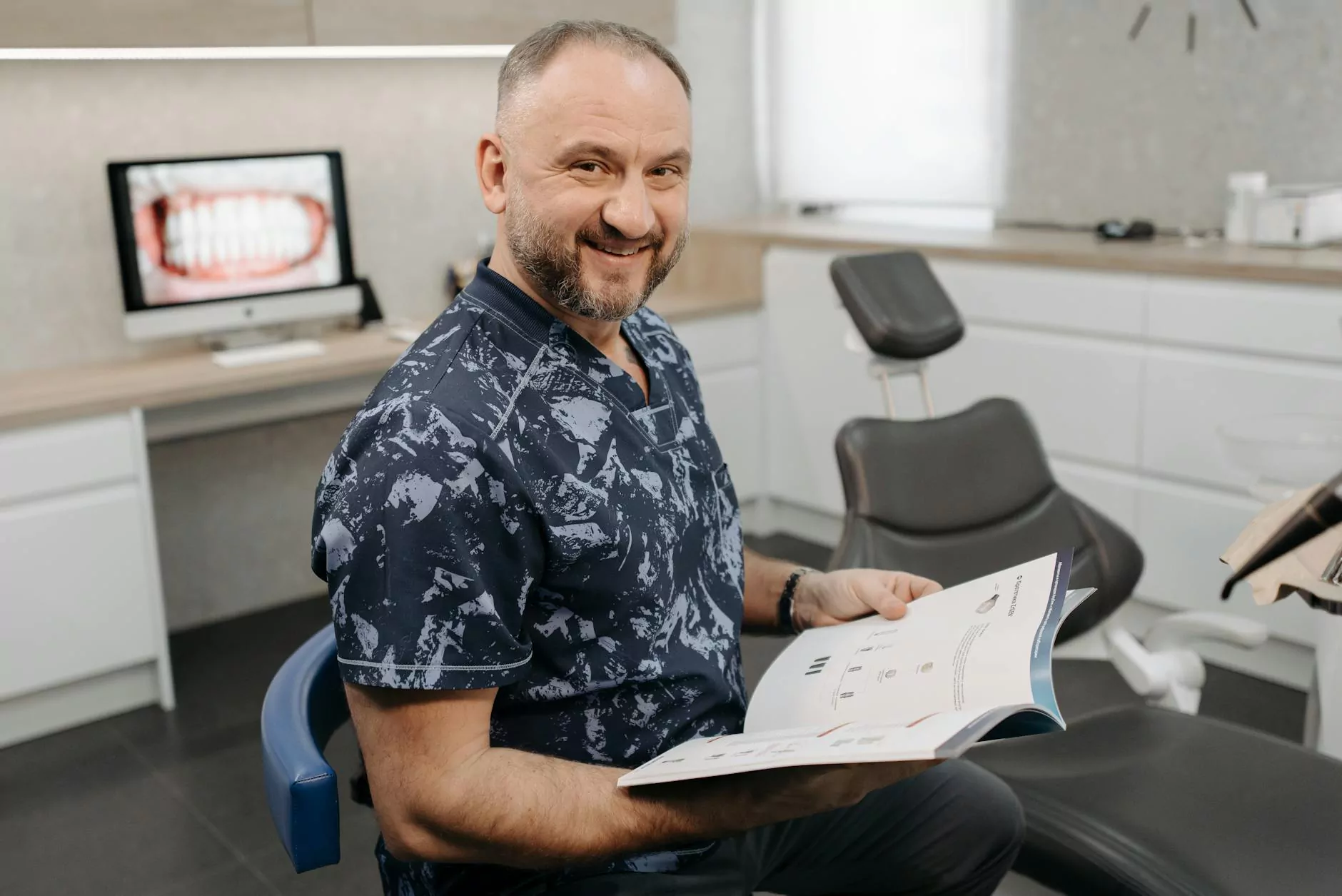Understanding Shoulder Pain on External Rotation: Causes, Diagnosis, and Effective Treatment Strategies

Shoulder pain, especially during external rotation, can significantly impair daily activities and athletic performance. The shoulder joint's complexity and range of motion make it susceptible to a variety of injuries and conditions. Recognizing the underlying causes of shoulder pain on external rotation is essential for timely and effective treatment. This comprehensive guide aims to provide detailed insights into the causes, symptoms, diagnosis, and therapeutic options for individuals experiencing this specific type of shoulder discomfort.
What Is Shoulder Pain on External Rotation?
Shoulder pain on external rotation refers to discomfort or pain experienced during the movement where the arm rotates away from the center of the body. This motion is fundamental in many activities, such as reaching behind your back, throwing, or overhead motions. When pain occurs during this movement, it often indicates underlying issues within the shoulder’s complex anatomy, including the rotator cuff, labrum, or surrounding ligaments.
The Anatomy of Shoulder Movement: Focus on External Rotation
The shoulder joint, or glenohumeral joint, is a ball-and-socket joint that offers an unparalleled range of motion. The external rotation involves muscles like the infraspinatus and teres minor, which are part of the rotator cuff group. These muscles stabilize the humeral head within the glenoid socket during rotation. Damage or strain within these structures often causes pain during external rotation.
Common Causes of Shoulder Pain on External Rotation
Understanding the root causes of shoulder pain on external rotation is crucial for effective management. Here are the primary causes:
- Rotator Cuff Tendinopathy: Overuse or degeneration of rotator cuff tendons, especially the infraspinatus tendon, can lead to inflammation and pain during external rotation.
- Rotator Cuff Tears: Complete or partial tears in rotator cuff tendons significantly impair movement and cause pain, particularly in activities involving external rotation.
- Impingement Syndrome: Compression of rotator cuff tendons or subacromial bursa during shoulder movement can provoke pain during external rotation, especially when overhead or with certain arm positions.
- Labral Tears: Tears of the glenoid labrum disrupt shoulder stability and can result in pain during external rotation, often accompanied by clicking or popping sensations.
- Adhesive Capsulitis (Frozen Shoulder): This condition causes stiffness and pain, especially during any movement involving external rotation, due to thickening of the shoulder capsule.
- Shoulder Instability: Recurrent dislocations or subluxations cause instability, with pain often triggered during external rotation, particularly in positions that stretch or strain lax ligaments.
- Bursitis: Inflammation of the subacromial bursa can cause localized pain that worsens with certain movements, including external rotation.
Symptoms Associated with Shoulder Pain on External Rotation
Individuals experiencing shoulder pain during external rotation typically report a combination of the following symptoms:
- Pain or discomfort: Usually localized, but can radiate to the upper arm or neck.
- Limited range of motion: Difficulty moving the arm outward or lifting it overhead.
- Weakness: Reduced strength during shoulder rotation, affecting daily tasks or sports activities.
- Clicking or popping sounds: Often present during movement, indicating joint or tissue irregularities.
- Instability sensations: Feeling that the shoulder may slip or dislocate.
- Swelling and tenderness: Especially if inflammation or acute injury is involved.
Diagnosing the Cause of Shoulder Pain on External Rotation
Effective treatment begins with an accurate diagnosis. Healthcare professionals use a combination of clinical evaluations, imaging studies, and functional assessments to determine the underlying pathology:
- Physical Examination: Includes specific shoulder maneuvers, strength testing, and palpation to identify tender areas and movement restrictions.
- Medical Imaging: MRI scans provide detailed images of soft tissues like tendons, muscles, and cartilage. Ultrasound can also be useful for dynamic assessment of tendons and rotator cuff integrity.
- Specialized Tests: Such as Neer and Hawkins-Kennedy tests for impingement, or the Empty Can test for rotator cuff integrity.
Effective Treatment Options for Shoulder Pain on External Rotation
Once the cause of shoulder pain is identified, a personalized treatment plan can be devised. Common treatment modalities include:
Non-Surgical Interventions
- Rest and Activity Modification: Avoid activities that exacerbate symptoms and allow inflammation to subside.
- Physical Therapy: Focuses on strengthening rotator cuff muscles, restoring range of motion, and improving shoulder stability through targeted exercises.
- Medications: NSAIDs like ibuprofen or naproxen help reduce inflammation and alleviate pain.
- Ice and Heat Therapy: Ice reduces swelling in acute phases; heat promotes blood flow and relaxation of muscles.
- Injections: Corticosteroid injections can provide rapid relief for severe inflammation or impingement symptoms.
Surgical Options
In cases where conservative treatments fail, surgical interventions might be necessary, such as:
- Arthroscopic Rotator Cuff Repair: Minimally invasive procedure to fix torn tendons.
- Labral Repair: Restores stability by suturing torn labrum tissue.
- Shoulder Decompression Surgery: Removes impinging structures to relieve pressure.
- Capsular Release: Loosening stiff shoulder capsules in frozen shoulder cases.
Preventive Strategies for Shoulder Health
Preventing shoulder injury, especially shoulder pain on external rotation, involves maintaining muscular balance, practicing proper techniques, and avoiding overuse:
- Regular Strengthening Exercises: Focus on rotator cuff and scapular stabilizers.
- Proper Warm-Up and Stretching: Prepare muscles and tendons for activity to prevent strain.
- Ergonomic Adjustments: Use correct posture and techniques during work or sports.
- Gradual Progression: Increase activity intensity carefully to avoid overloading tissues.
- Addressing Imbalances: Correct imbalances between anterior and posterior shoulder muscles to improve joint stability.
Expert Insights from the Healthcare and Educational Sectors
Advances in medical education and research continue to enhance our understanding of shoulder pathologies. Experts emphasize the importance of early detection and individualized treatment approaches. Healthcare providers specializing in chiropractic care, physical therapy, and orthopedic surgery work collaboratively to optimize outcomes for patients suffering from shoulder pain on external rotation.
For those seeking professional help, consult qualified practitioners who can perform comprehensive assessments, provide tailored interventions, and guide rehabilitation. Preventive care and patient education are equally vital components to maintain shoulder health and prevent recurrence of symptoms.
Conclusion: Take Charge of Your Shoulder Health
Understanding shoulder pain on external rotation involves recognizing its causes, symptoms, and the most effective treatment options. Whether experiencing acute injury or chronic discomfort, early intervention combined with appropriate therapy can significantly improve function and quality of life.
By staying informed, practicing preventive measures, and consulting healthcare professionals when needed, you can maintain optimal shoulder health and prevent future injuries. Remember, a proactive approach is key to overcoming shoulder pain and returning to your daily activities with confidence.
If you are experiencing persistent symptoms or uncertain about your condition, reach out to specialists in the fields of *Health & Medical*, *Education*, or *Chiropractors* at iaom-us.com. Our expert team is dedicated to providing guidance, personalized treatment, and education to help you achieve long-term shoulder health.









